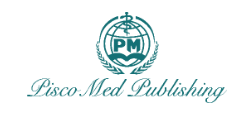Determining quality of hire, the holy grail of recruitment: A structuration perspective
Abstract
Keywords
Full Text:
PDFReferences
Beechler S, Woodward IC. The global “war for talent”. Journal of International Management 2009; 15(3): 273–285. doi: 10.1016/j.intman.2009.01.002
Bower T. Reengineering the recruitment process. Available online: https://hbr.org/2021/03/reengineering-the-recruitment-process (accessed on 13 October 2023).
Yu KYT, Dineen BR, Allen DG, Klotz AC. Winning applicants and influencing job seekers: An introduction to the special issue on employer branding and talent acquisition. Human Resource Management 2022; 61(5): 515–524. doi: 10.1002/hrm.22140
Fuller J, Sigelman M. Manage your talent pipeline like a supply chain. Available online: https://hbr.org/2021/11/manage-your-talent-pipeline-like-a-supply-chain (accessed on 13 October 2023).
Tholen G. Matchmaking under uncertainty: How hiring criteria and requirements in professional work are co-created. Employee Relations 2023; 45(3): 603–614. doi: 10.1108/ER-06-2022-0262
Ulrich D, Dulebohn JH. Are we there yet? What’s next for HR? Human Resource Management Review 2015; 25(2): 188–204. doi: 10.1016/j.hrmr.2015.01.004
Makram H, Sparrow P, Greasley K. How do strategic actors think about the value of talent management? Moving from talent practice to the practice of talent. Journal of Organizational Effectiveness: People and Performance 2017; 4(4): 259–378. doi: 10.1108/JOEPP-06-2017-0051
Keller JR. Posting and slotting: How hiring processes shape the quality of hire and compensation in internal labor markets. Administrative Science Quarterly 2018; 63(4): 848–878. doi: 10.1177/0001839217736045
Breaugh JA. Predicting voluntary turnover from job applicant biodata and other applicant information. International Journal of Selection and Assessment 2014; 22(3): 321–332. doi: 10.1111/ijsa.12080
Engberg R, Hörte SÅ, Lundbäck M. Strategy implementation and organizational levels: Resourcing for innovation as a case. Journal of Organizational Effectiveness: People and Performance 2015; 2(2): 157–175. doi: 10.1108/JOEPP-03-2015-0007
Breaugh JA. Employee recruitment. Annual Review of Psychology 2013; 64: 389–416. doi: 10.1146/annurev-psych-113011-143757
van Mierlo J, Bondarouk T, Sanders K. The dynamic nature of HRM implementation: A structuration perspective. The International Journal of Human Resource Management 2018; 29(22): 3026–3045. doi: 10.1080/09585192.2018.1443957
Kravariti F, Oruh ES, Dibia C, et al. Weathering the storm: Talent management in internationally oriented Greek small and medium-sized enterprises. Journal of Organizational Effectiveness: People and Performance 2021; 8(4): 444–463. doi: 10.1108/JOEPP-01-2021-0022
Stephan M, Erickson R. Talent acquisition: Enter the cognitive recruiter. 2017 global human capital trends. Available online: https://www2.deloitte.com/uk/en/insights/focus/human-capital-trends/2017/predictive-hiring-talent-acquisition.html (accessed on 13 October 2023).
Stubbings C, Sethi B. Upskilling: Building confidence in an uncertain world. Available online: https://www.pwc.com.au/digitalpulse/report-ceo-survey-upskilling.html (accessed on 13 October 2023).
Trusty J, Allen DG, Fabian F. Hunting while working: An expanded model of employed job search. Human Resource Management Review 2019; 29(1): 28–42. doi: 10.1016/j.hrmr.2017.12.001
Cunningham I, Nickson D. A gathering storm: Re‐tendering and the voluntary sector workforce. International Journal of Public Sector Management 2011; 24(7): 662–672. doi: 10.1108/09513551111172486
De Smet A, Dowling B, Mugayar-Baldocchi M, Schaninger B. ‘Great attrition’ or ‘great attraction’? The choice is yours. Available online: https://www.mckinsey.com/capabilities/people-and-organizational-performance/our-insights/great-attrition-or-great-attraction-the-choice-is-yours (accessed on 13 October 2023).
Lee TW, Hom P, Eberly M, Li J. Managing employee retention and turnover with 21st century ideas. Organizational Dynamics 2018; 47(2): 88–98. doi: 10.1016/j.orgdyn.2017.08.004
PwC. PwC pulse survey: Next in work. Available online: https://www.pwc.com/us/en/library/pulse-survey/future-of-work.html (accessed on 13 October 2023).
Barnett RC, Hall DT. How to use reduced hours to win the war for talent. Organizational Dynamics 2001; 29(3): 192–210.
Paschen J, Wilson M, Ferreira JJ. Collaborative intelligence: How human and artificial intelligence create value along the B2B sales funnel. Business Horizons 2020; 63(3): 403–414. doi: 10.1016/j.bushor.2020.01.003
Cross R, Opie T, Pryor G, Rollag K. Connect and adapt: How network development and transformation improve retention and engagement in employees’ first five years. Organizational Dynamics 2018; 47(2): 115–123. doi: 10.1016/j.orgdyn.2017.08.003
Tlaiss HA, Martin P, Hofaidhllaoui M. Talent retention: Evidence from a multi-national firm in France. Employee Relations 2017; 39(4): 426–445. doi: 10.1108/ER-07-2016-0130
Boon C, Biron M. Temporal issues in person–organization fit, person–job fit and turnover: The role of leader–member exchange. Human Relations 2016; 69(12): 2177–2200. doi: 10.1177/0018726716636945
Cascio WF, Aguinis H. 3 Staffing twenty‐first‐century organizations. The Academy of Management Annals 2008; 2(1): 133–165. doi: 10.1080/19416520802211461
Ko MC, Campbell JW. Social capital, person-organization fit and cynicism: A multi-stage mediation model of turnover intention in public organizations. Employee Relations 2021; 43(4): 936–954. doi: 10.1108/ER-05-2020-0237
Budhwar P, Malik A, De Silva MTT, Thevisuthan P. Artificial intelligence-challenges and opportunities for international HRM: A review and research agenda. The International Journal of Human Resource Management 2022; 33(6): 1065–1097. doi: 10.1080/09585192.2022.2035161
Fuller J, Raman M, Bailey A, Vaduganathan N. Rethinking the on-demand workforce. Available online: https://hbr.org/2020/11/rethinking-the-on-demand-workforce (accessed on 13 October 2023).
Mitchinson A, Morris R. Learning about learning agility. A White Paper. Centre for Creative Leadership; 2014.
Petriglieri J, Petriglieri G. The talent curse: Why high potentials struggle and how they can grow through it. Harvard Business Review 2017; 95(3): 88–95.
Abbot L, Batty R, Bevegni S. Global recruiting trends 2016—Relationships at the core. Available online: https://business.linkedin.com/content/dam/business/talent-solutions/global/en_us/c/pdfs/GRT16_GlobalRecruiting_100815.pdf (accessed on 13 October 2023).
Lermusiaux Y, Snell A. Quality of hire. Available online: https://www.nextaff.com/wp-content/uploads/2015/11/nextaff-white-paper-quality-hire.pdf (accessed on 13 October 2023).
Weldon D. Talent Acquisition Strategies: Employer Branding and Quality of Hire Take Center Stage. Aberdeen Group; 2008.
Ryan AM, Derous E. Highlighting tensions in recruitment and selection research and practice. International Journal of Selection and Assessment 2016; 24(1): 54–62. doi: 10.1111/ijsa.12129
Ulrich D. From war for talent to victory through organization. Strategic HR Review 2015; 14(1/2): 8–12. doi: 10.1108/SHR-01-2015-0004
Campion MC, Campion ED, Campion MA. Using practice employment tests to improve recruitment and personnel selection outcomes for organizations and job seekers. Journal of Applied Psychology 2019; 104(9): 1089–1102. doi: 10.1037/apl0000401
Giddens A. The Constitution of Society: Outline of the Theory of Structuration. University of California Press; 1985.
Yin RK. The Case Study Research: Design and Methods, 2nd ed. SAGE Publications; 1994.
Flyvbjerg B. Five misunderstandings about case-study research. Qualitative Inquiry 2006; 12(2): 219–245. doi: 10.1177/1077800405284363
Zucker DM. How to do case study research. Teaching Research Methods in the Social Sciences 2009; 2.
Eisenhardt KM, Graebner ME. Theory building from cases: Opportunities and challenges. Academy of Management Journal 2007; 50(1): 25–32. doi: 10.5465/amj.2007.24160888
Francis JJ, Johnston M, Robertson C, et al. What is an adequate sample size? Operationalising data saturation for theory-based interview studies. Psychology and Health 2010; 25(10): 1229–1245. doi: 10.1080/08870440903194015
Winby S, Worley CG. Management processes for agility, speed, and innovation. Organizational Dynamics 2014; 43(3): 225–234. doi: 10.1016/j.orgdyn.2014.08.009
DOI: https://doi.org/10.18282/hrms.v5i2.3373
Refbacks
- There are currently no refbacks.



